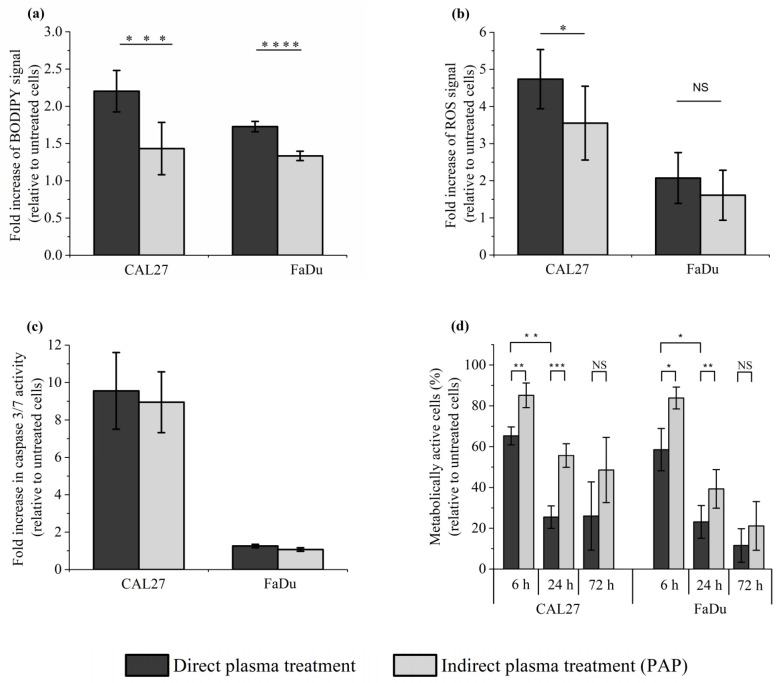Figure 8.
Direct plasma treatment is slightly more efficient than indirect plasma treatment (PAP) at inducing lipid peroxidation, an intracellular increase of ROS, and cancer cell death, while no significant difference was observed between these two treatment methods at inducing caspase 3/7 activation. CAL27 and FaDu cells were exposed to direct and indirect (PAP) plasma treatments, and then the cells were either immediately collected for the evaluation of lipid peroxidation (a) and intracellular ROS formation (b), or further incubated for 6 h to evaluate caspase 3/7 activation (c) or for 6 h, 24 h and 72 h to evaluate cell death (d). The results presented here correspond to a gas flow rate of 1 slm (99.8% He/0.2% O2), a treatment distance of 8 mm and a treatment time of 12 min. The data are the mean ± SD of 4 to 7 independent experiments for (a), 4 independent experiments for (b), 2 independent experiments for (c), and 3 to 4 independent experiments for (d). Statistical significance NS: p > 0.05; *: p ≤ 0.05; **: p ≤ 0.01; ***: p ≤ 0.001; ****: p ≤ 0.0001 (t-test).

